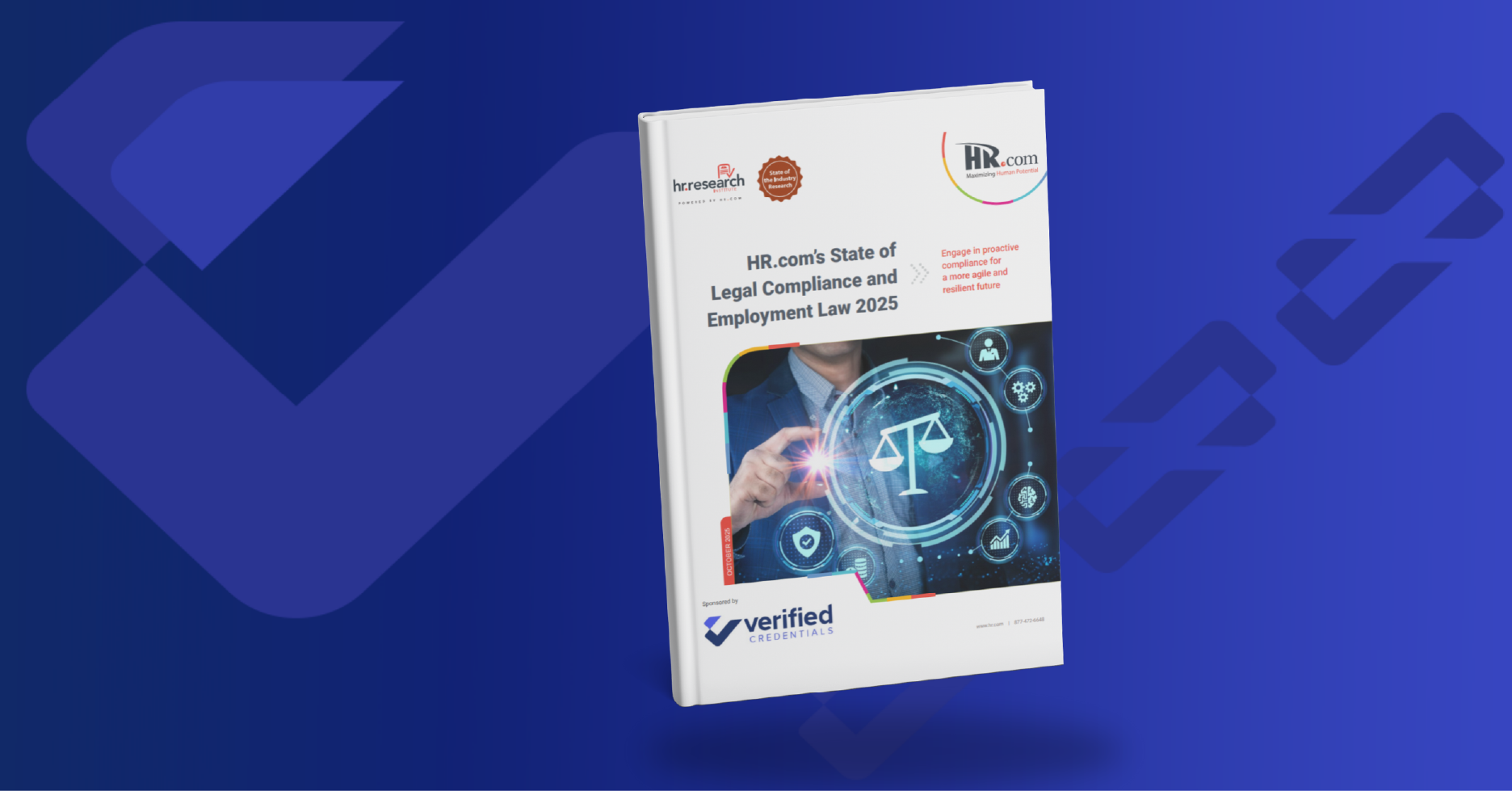A Quick Guide to Understanding the 7-Year Lookback Rule in Consumer Reporting
If you are involved in your team’s background screening and hiring process, you'reprobably familiar with the “7-year lookback rule” for criminal ...
With Verified Credentials' mobile-first candidate experience, you meet candidates where it's most convenient. Learn how easy we make it.
|
|
Now offering DOT services!Get your drivers on the road quickly and meet DOT regulations. |
Gain clarity about your compliance responsibilities with our new Adverse Action Guide! Use the interactive map to learn what regulations apply in your area.
Verified Credentials is a leading background screening company. Since 1984, we’ve helped validate and secure relationships through the use of our comprehensive screening solutions. We offer a wide variety of background checks, verifications, and innovative screening tools.

Our accreditation confirms that our policies, processes, and employee training meet rigorous industry compliance standards.
3 min read
Verified Credentials Jun 23, 2021 12:00:00 AM

They say consistency builds trust. When it comes to background checks, the information you verify and how it is evaluated might even help mitigate risk too. An inconsistent approach to background checks could result in poor hires and could even leave employers open to potential negligent hiring lawsuits. Just think, if you know what to screen, but the rest of your team doesn’t know what to look for when hiring. The way different hiring managers look at hiring criteria could result in casual yet costly mistakes.
We are going to look at three practices that could potentially help build consistency into background screening.
Want to replicate how you screen any time you hire? A clear background check policy could help make sure the same searches are done over and over again.
If followed, a clear background check policy might define different kinds of background checks for different candidates and set standard rules on how background checks are interpreted.
Some example points that you could keep in mind when developing your background check policies may include:
These elements could be helpful to consider when crafting background check policies. Once a background check policy is created, spread the word! Employers who develop background check policies may want to make sure they are clearly communicated within the organization. This could help keep everyone in the organization on the same page. That could include hiring managers, executives, admin, and others. Documenting policies, making it accessible, and training relevant staff can help ensure consistent screening application.
A good policy is great. But at the end of the day, it’s the application of that policy could make the difference.
Some employers may use different background check packages for different types of roles. For example, an employer may decide to:
For fast, consistent ordering, some employers may choose to group routinely used background checks into packages. When they need to screen a candidate, the employee that places the order can simply select the package that aligns with the role, employee level, or location. This could reduce questions on what background checks should be included.
Defining a set of background checks to use for different groups of candidates can help create a fair and dependable screening process.
Consistency shouldn’t be a matter of discipline alone. Built-in tools could potentially help reduce variation in how hiring managers systematically apply a background check policy.
Using an adjudication tool might help improve consistency in reviewing background check results. This process documents your rules and automatically applies them to help with report review. Verified Credentials’ Verified Clear View tool color-codes background check results based on client-provided, pre-established, objective criteria. In some ways, Verified Clear View could be a control plan for report evaluation. For example, employers might assign one color to anyone that has discrepancies in their past employment dates. HR professionals can quickly identify which candidates to reach out to for follow-up. As a result, the way teams process final reports is efficient and held to one specific standard. Your standard. That type of consistency in the report review process can help ensure fair handling of all candidate records.
Approaching background checks with a consistent process is about more than avoiding lawsuits. It’s about treating candidates fairly and making the process easier for your team. Establishing an objective way for screening and reviewing reports during the hiring process helps keep things even. By focusing on background check selection and review, HR professionals can help protect and build trust in their organizations. All while helping to maintain a consistent and quality experience for candidates.
Looking for more ways to make your background check process more consistent? Contact Verified Credentials and our experts can help set up background checks that meet your policies.

If you are involved in your team’s background screening and hiring process, you'reprobably familiar with the “7-year lookback rule” for criminal ...

Whether your program supports nursing students or other healthcare tracks, every clinical placement requires a unique mix of verifications,...

Navigating compliance is a key concern for HR pros in any industry and keeping up with legislative changes while anticipating future developments is...
Don’t you hate that feeling when you rush and forget something on the way out of the door? If you need the same things every time you leave your...

The weather is warm, the flowers are in bloom, and the sun is shining. The return of summer means wedding season is upon us once again. For family...

Regardless of your company’s size,seamless hiringcan help organizations create a faster and more positive experience for both candidates and ...